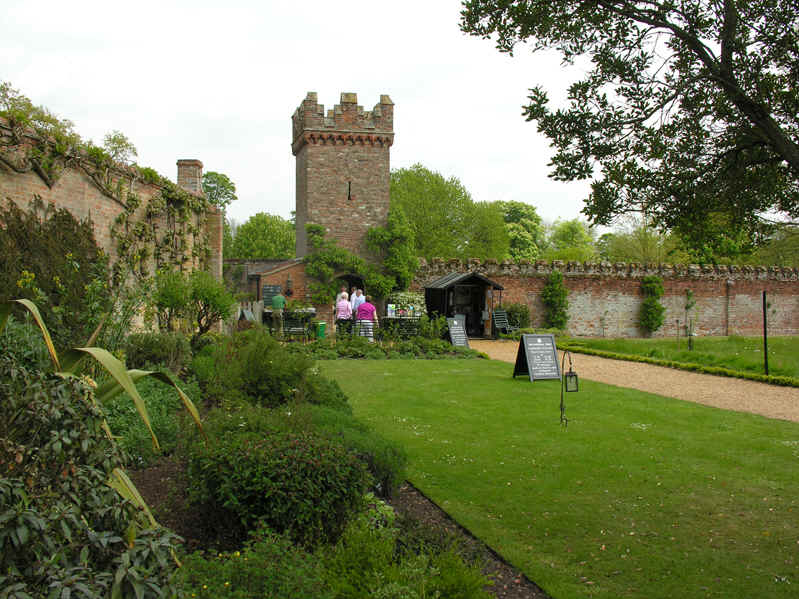
I recently spent a few days in Norfolk. One of
the first places I visited was Oxburgh Hall, which is a National Trust
property.
This beautiful manor house has been occupied by
the same family (the Bedingfields) since it was built in 1482. This view
is of the entrance to the estate. The wall enclosing the gardens has a
series of crenellated towers, this tower containing the entrance gate.
|
|
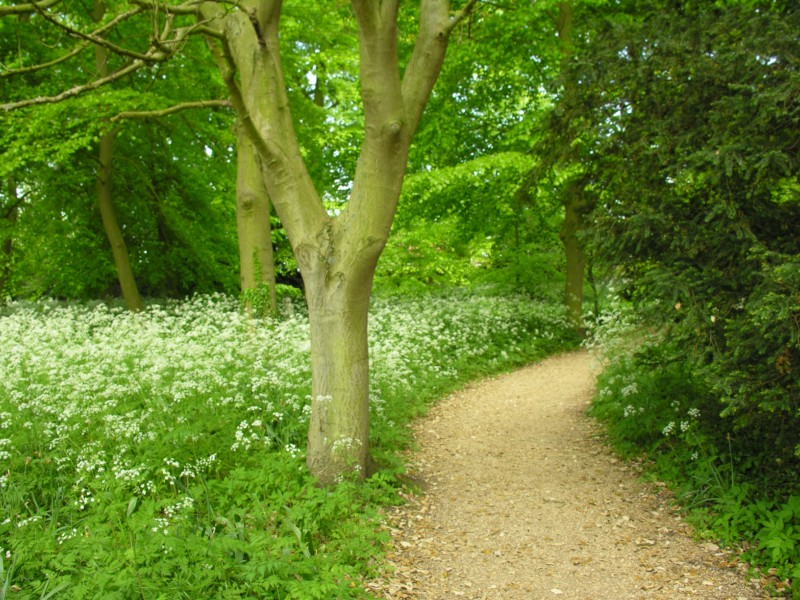 Near the entrance was a small wooded area under planted
with wild cowparsley.
|
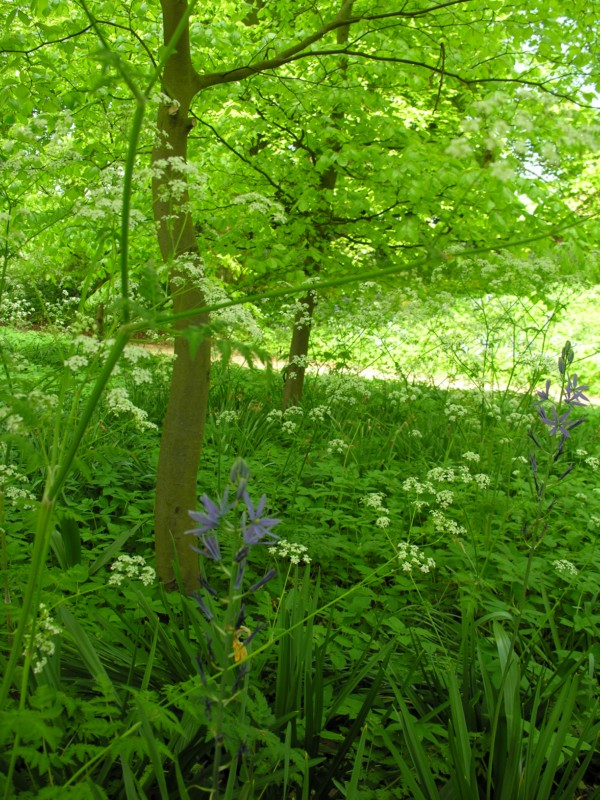 |
|
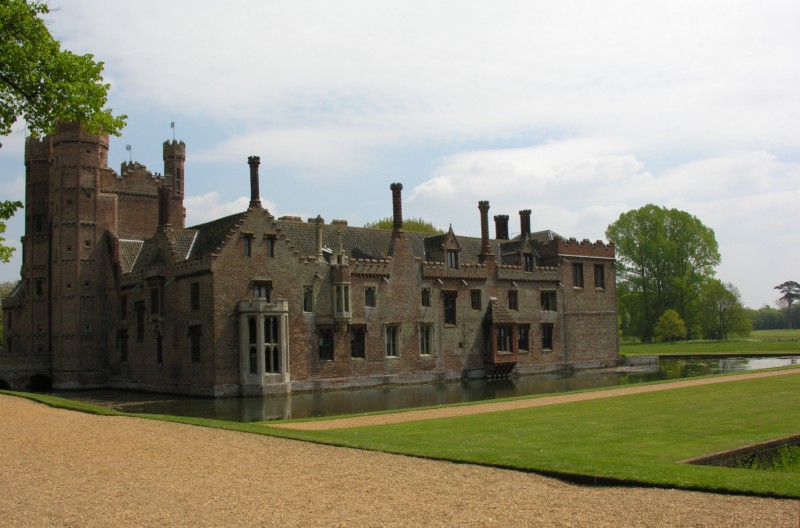 |
|
A first glimpse of the house. Like many houses of
this age it has had various architectural alterations and additions over
the centuries.
Many houses had defensive moats in the past, but
not many moats still contain water, so it is lovely to see this example.
|
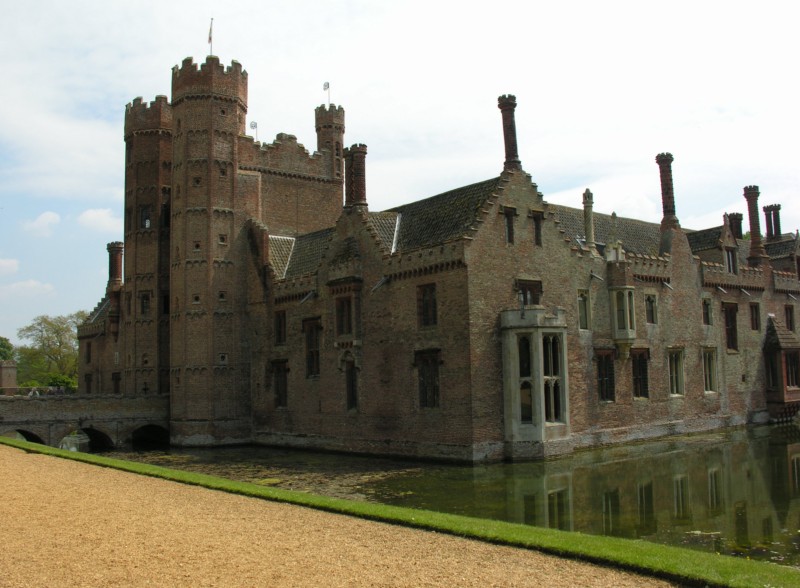 |
|
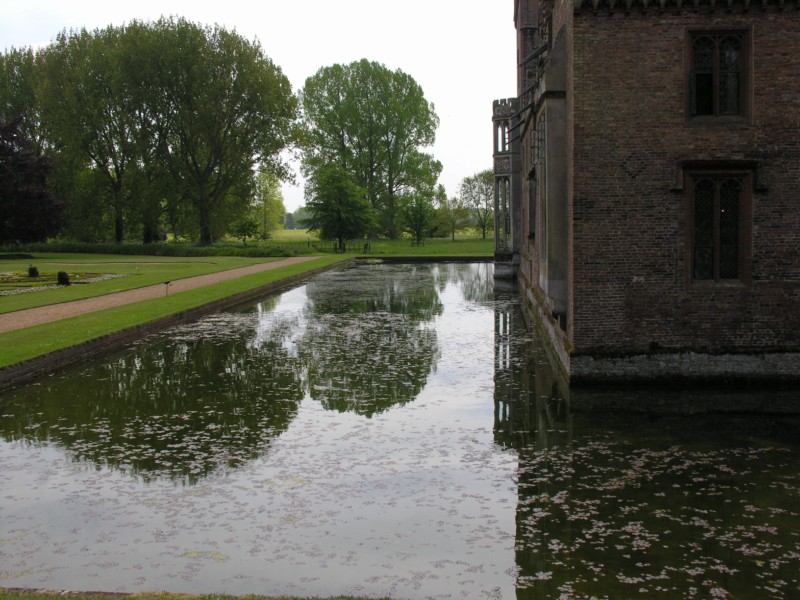 |
|
The moat is only a few feet deep, but it is full
of fish, which I could see swimming about in the fairly clear waters.
|
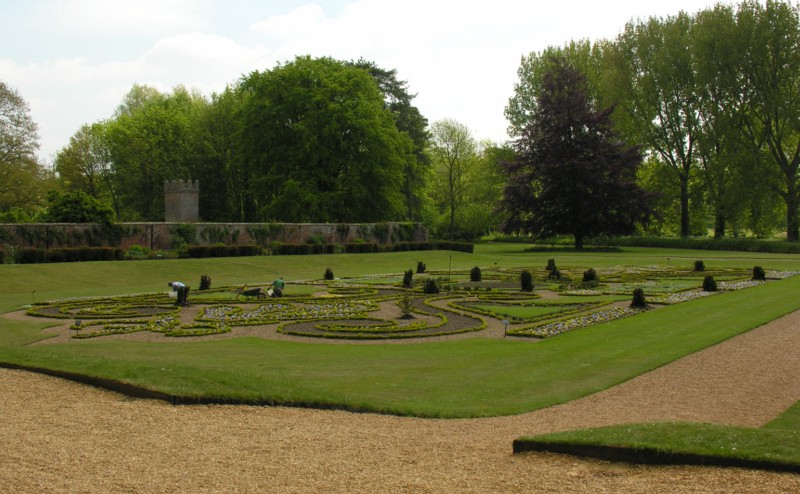 |
|
Beside the house some gardeners were busy
planting out summer bedding plants, in a formal garden.
|
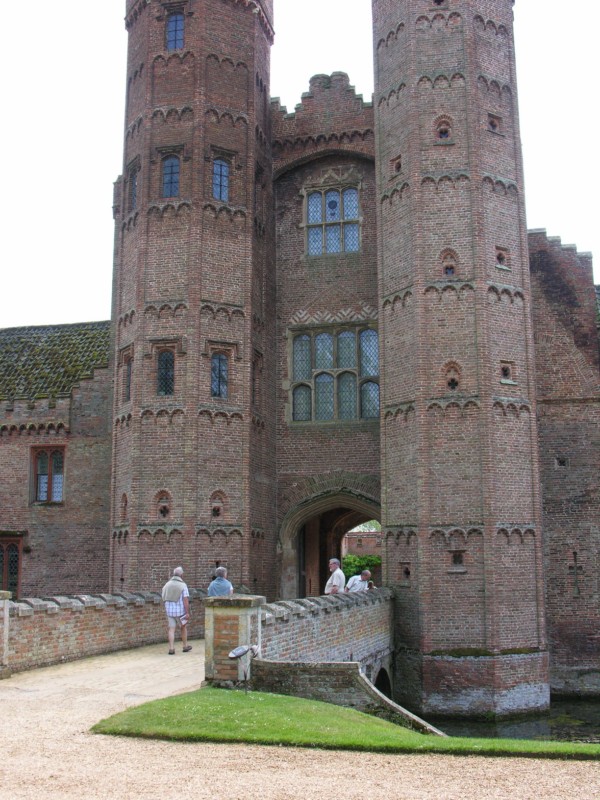 |
|
There is no drawbridge, just an ordinary bridge
to cross into the house.
|
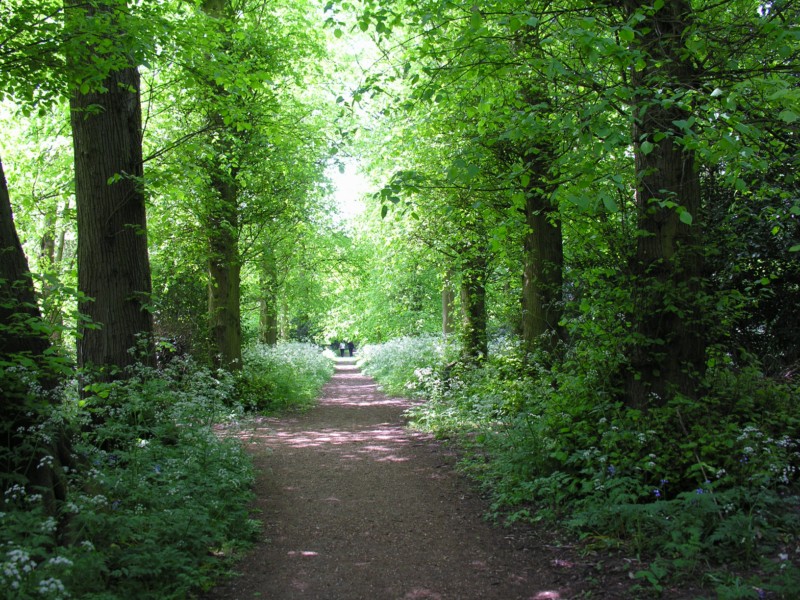 |
|
The house does not have huge areas of parkland these
days, but there are several different environments where visitors can wander. To
one side of the house is a shady woodland walk. The bluebells were just dying
down when I visited in late May.
|
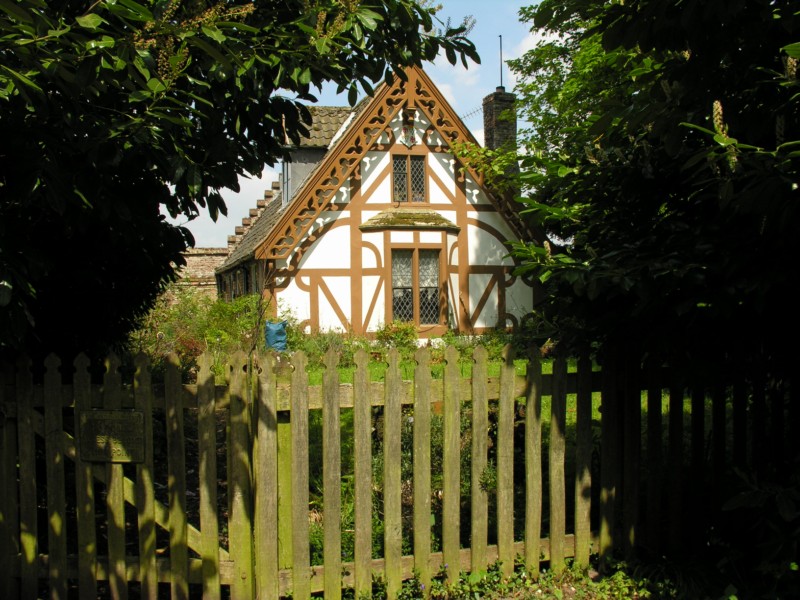 |
|
A small woodland cottage which I think was occupied by
one of the estate workers. It looks like an Alpine chalet or a house from a
fairytale!
|
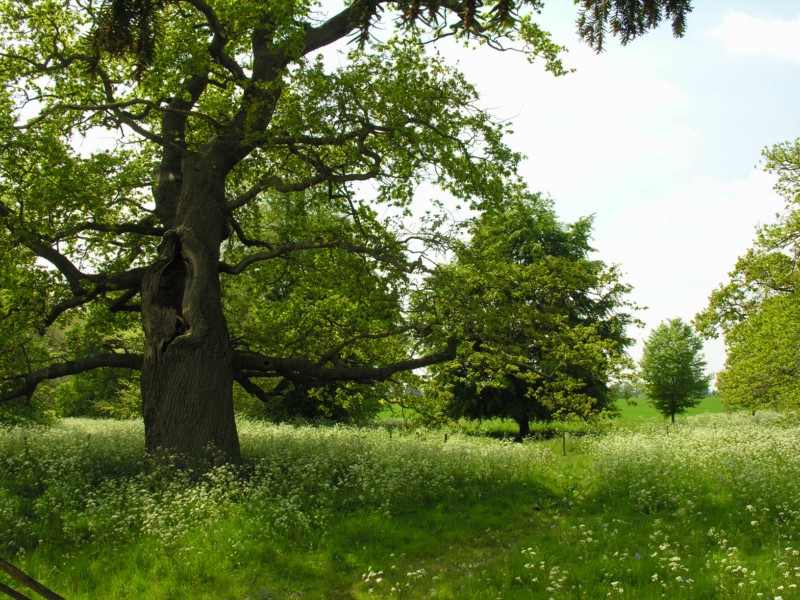 |
|
Ancient trees on the edge of the grounds overlook
surrounding farmland.
|
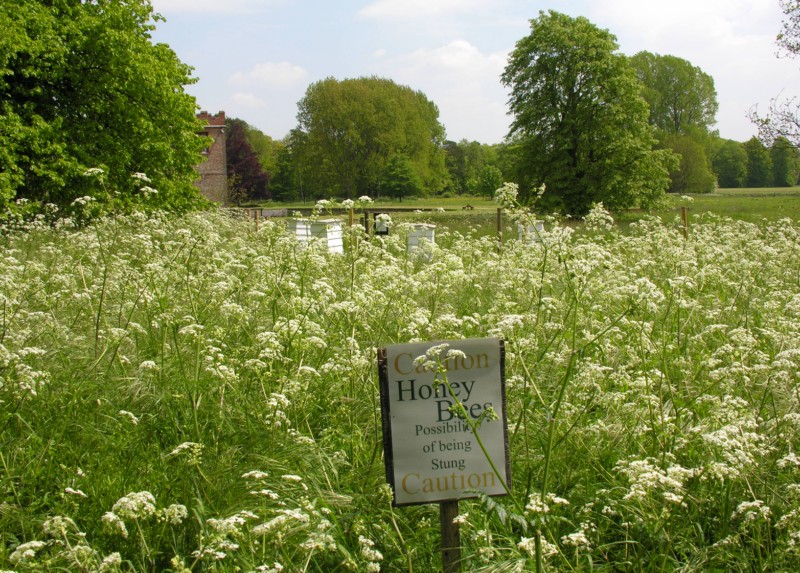 |
|
I took a walk around the perimeter of the
grounds. I did not want to be stung, so I moved quickly on once I had
taken this photo. Mind you, I did not spot any bees. It was a hot day and
I think they were resting.
|
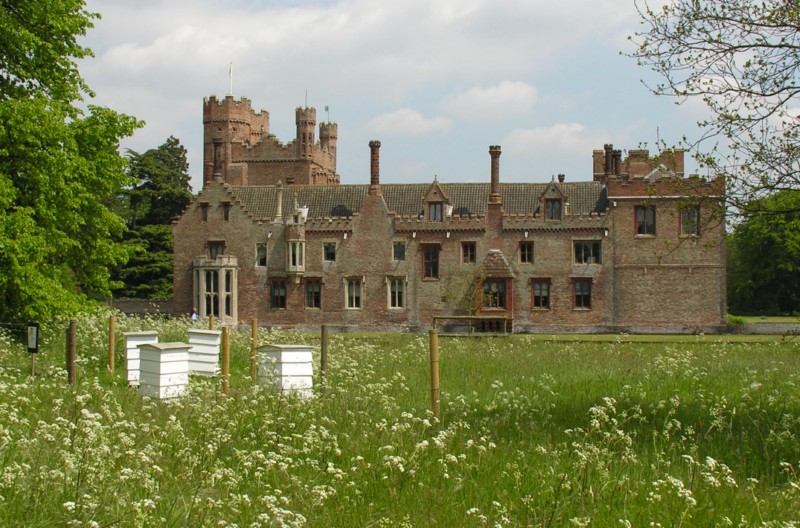 |
|
The beehives were of a very traditional design. Lots of
pollen for the bees in these meadows.
|
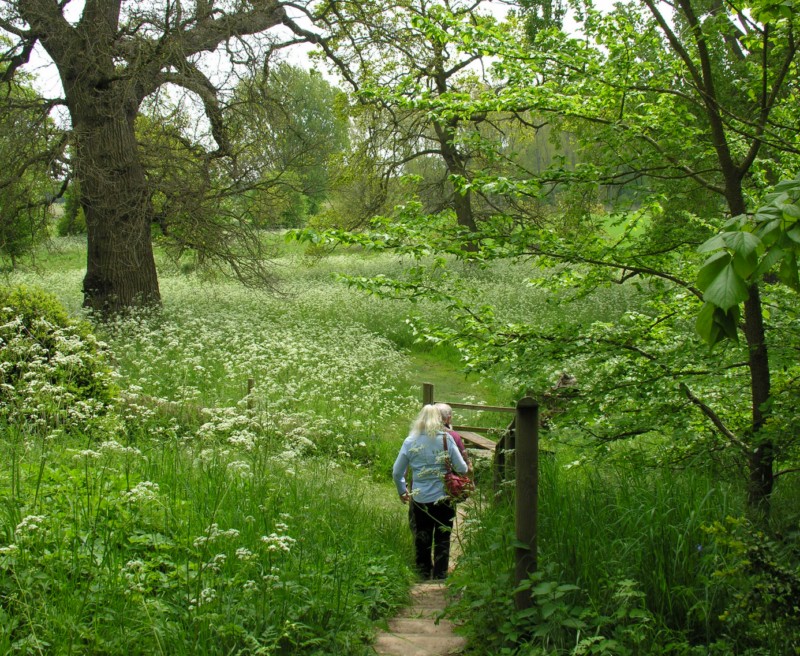 |
|
This meadow was waist-high in cowparsley. So
pretty!
|
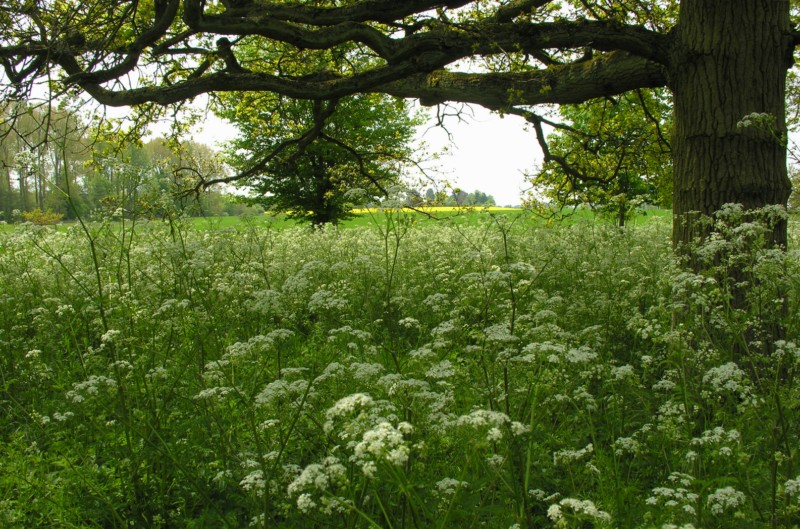 |
|
|
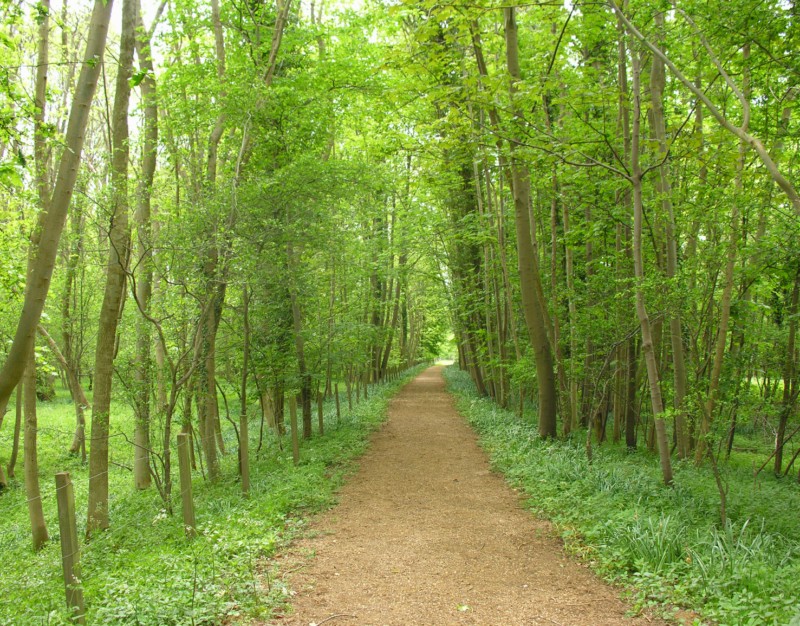 |
|
Beyond the meadow there was a small area of
woodland. This raised walkway was bordered with daffodils. It must have been a
lovely sight a few weeks earlier when they were in flower.
|
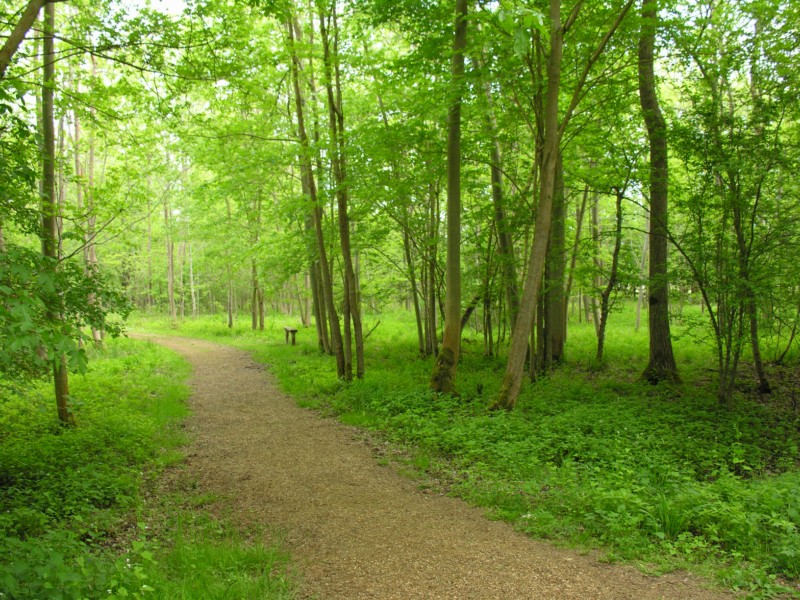 |
|
It was wonderful to walk amongst the green shade of
these woods. I had read in the guidebook
that native Monkjack deer could be found in these woods. I didn't expect to see
them in the middle of the day, but actually I did disturb a couple of them, but
they raised their heels and disappeared into the woods before I could photograph
them.
|
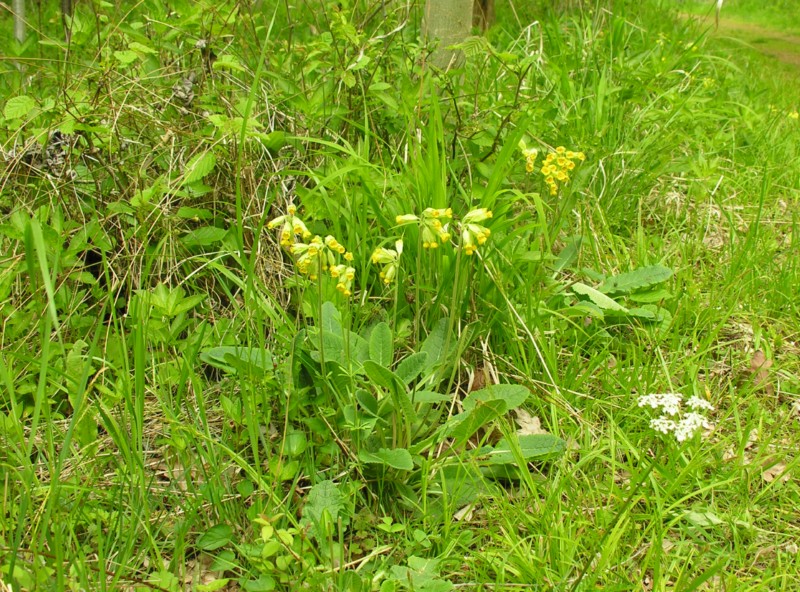 |
|
Native cowslips were in flower. I love these
plants and have some in my garden.
|
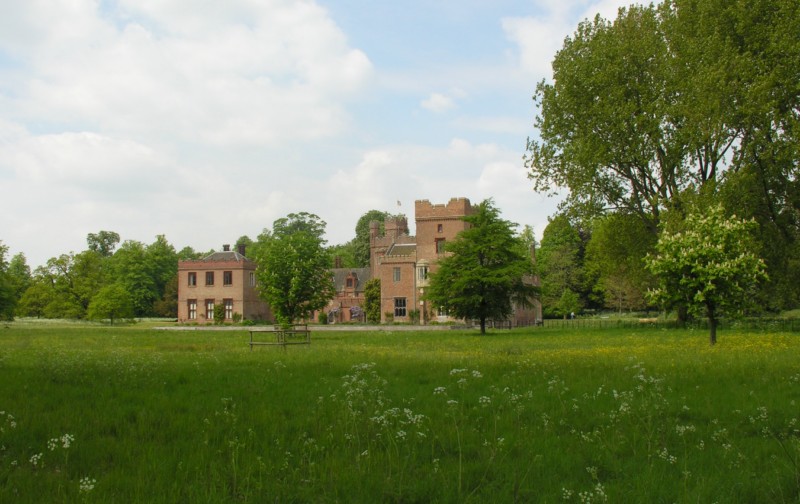 |
|
View of the house from across the meadows.
Buttercups were starting to come into bloom in the fields.
|
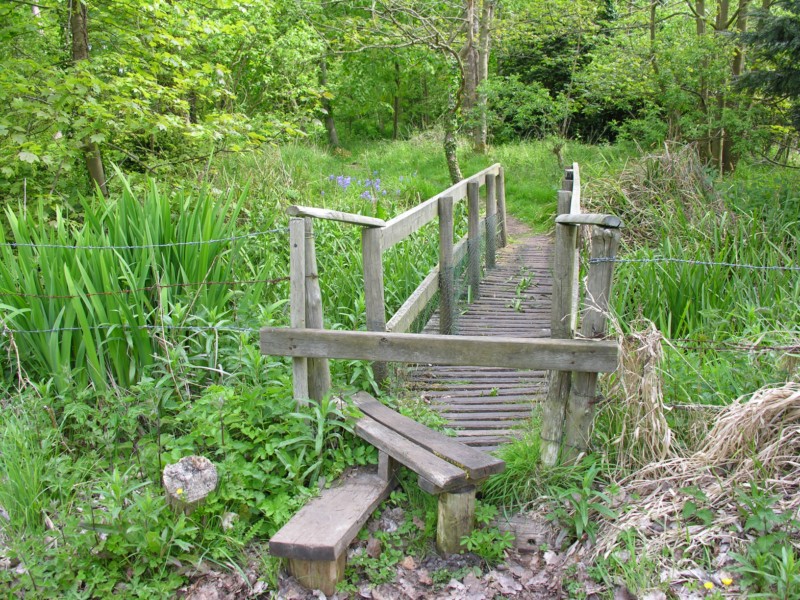 |
|
In another corner of the estate was another short
woodland walk, with a river running through the woods. You entered the walk by
crossing this stile.
|
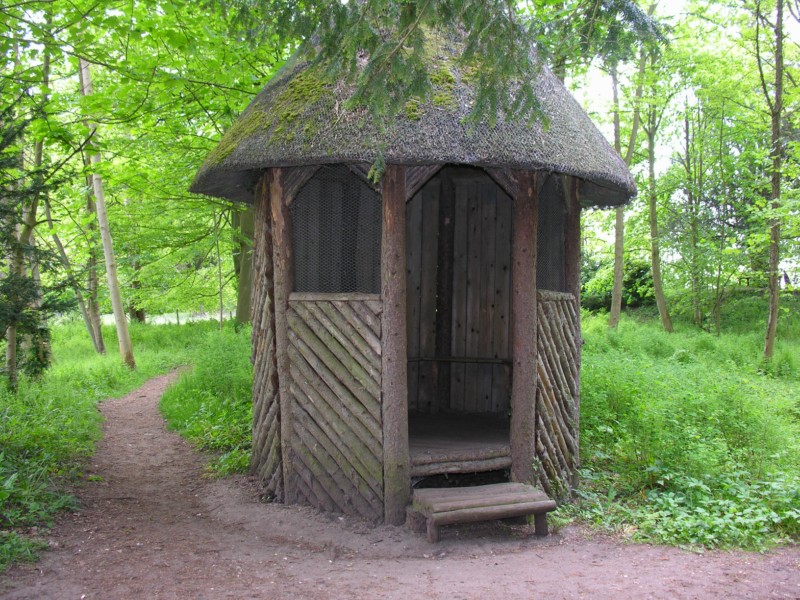 |
|
This fishing hut (with a thatched roof) provided a shady
spot to relax whilst waiting for the fish to bite.
|
|
 |
|
This was the view from the hut.
|
|
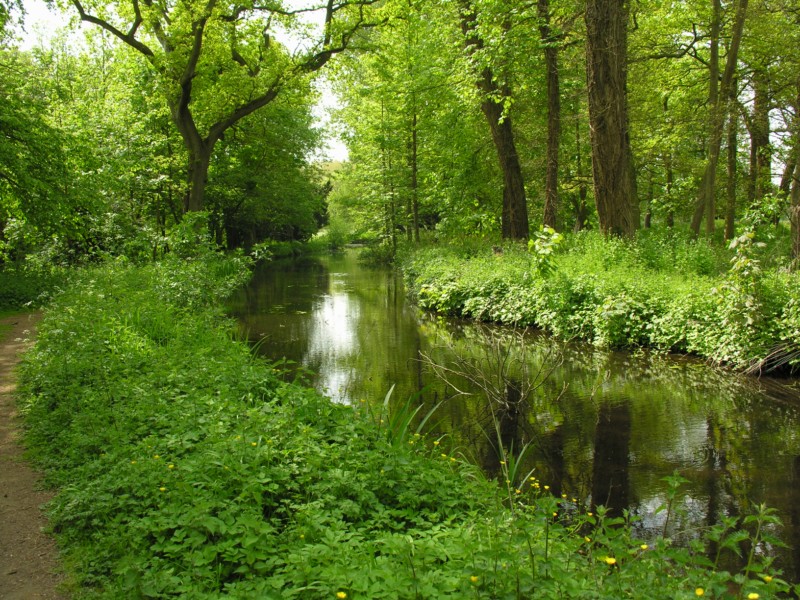 |
|
The river became wider as you approached the
house.
|
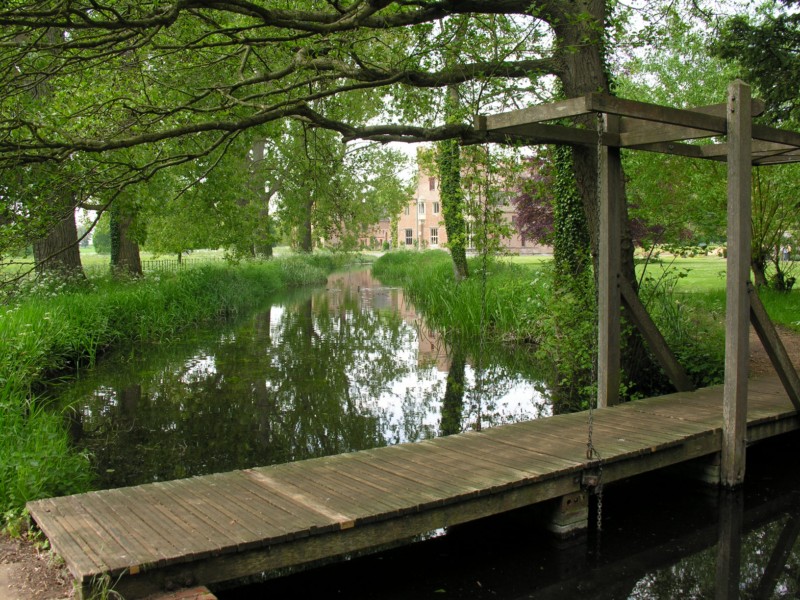 |
|
This bridge can be raised to allow a small boat
to pass. The river is used to feed the moat with water.
|
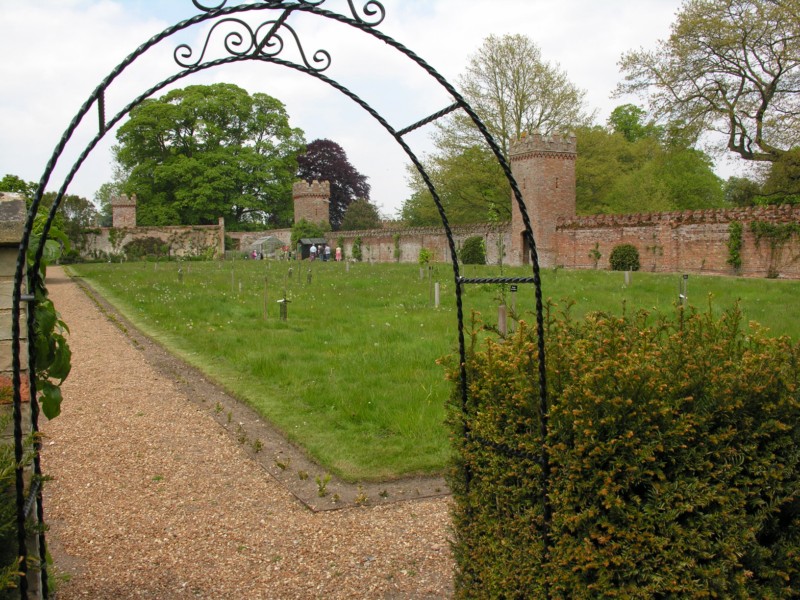 |
|
Near the entrance to the house this area was in the
process of being turned into an orchard. Small saplings had been planted and box
hedging was starting to grow around the edges of the path.
|
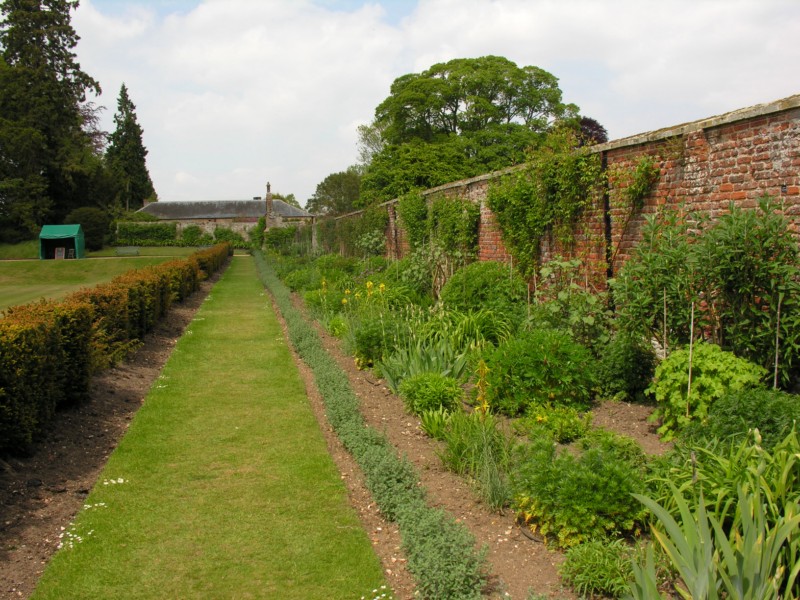 |
|
There was a small herbaceous border to the side
of the orchard.
|
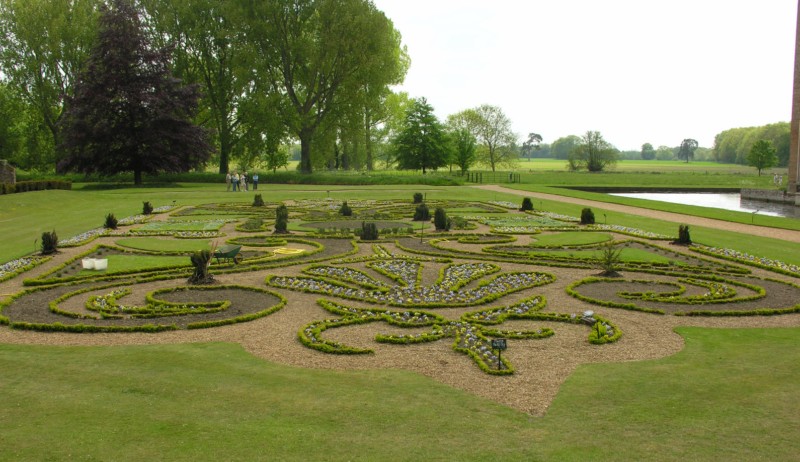 |
|
Garden tours take place throughout the day. This
group were admiring the formal beds, which were filling up nicely with
plants.
|
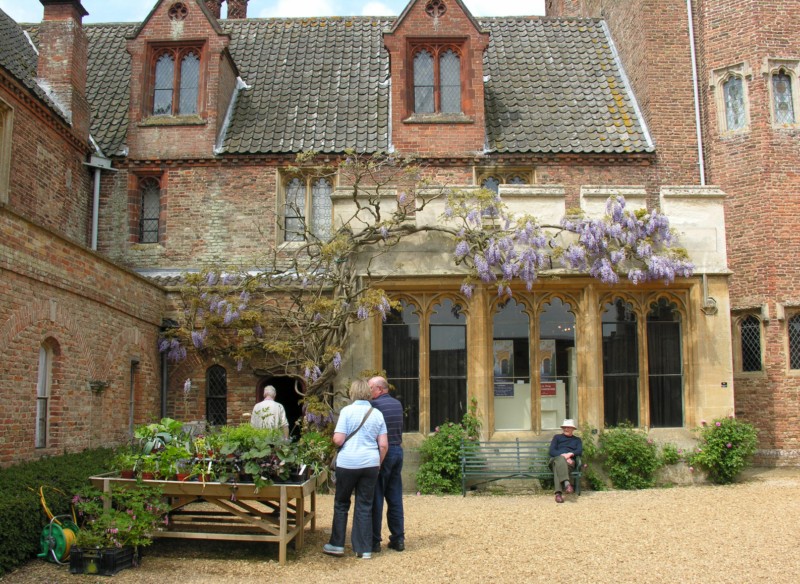 |
|
Plants were for sale within the courtyard of the house.
The wisteria were in full bloom beside the shop.
|
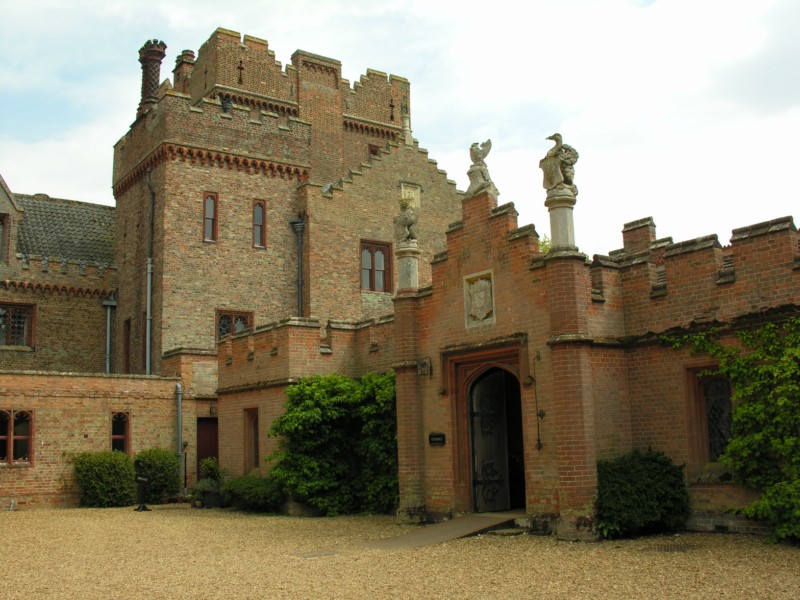 |
|
This is the entrance to the house itself. The
heraldic beast were guarding the doorway. The
house itself has an interesting history. The family were Catholic, and when
Catholics were persecuted, they created a Priest's hole (a small hidden
space where a person could hide from searchers) which can still be viewed. Mary
Queen of Scots was held in custody here, and needlework panels worked by her in
the 16th century are on display in the hall.
|
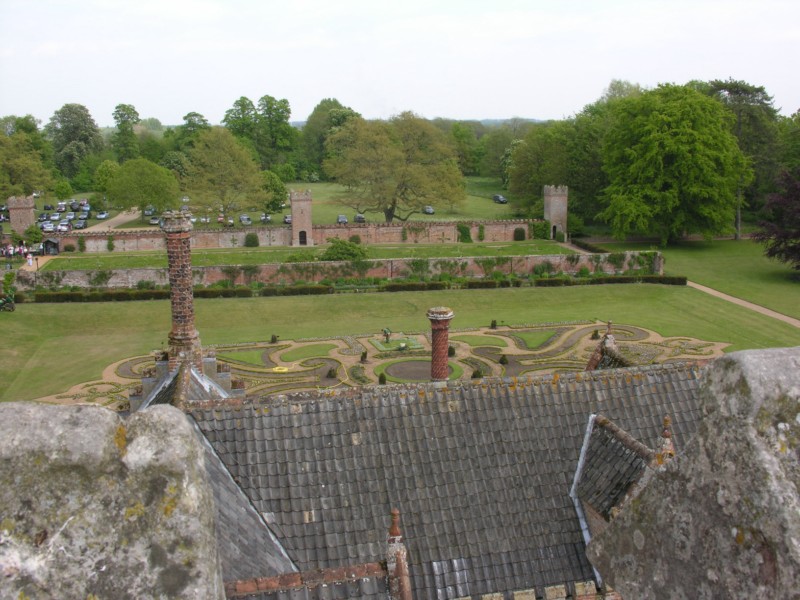 |
|
It is possible to climb one of the towers and view the
estate from the rooftops, which I did. Here you can see the formal gardens,
orchard, and beyond the wall, the field used for car parking.
|
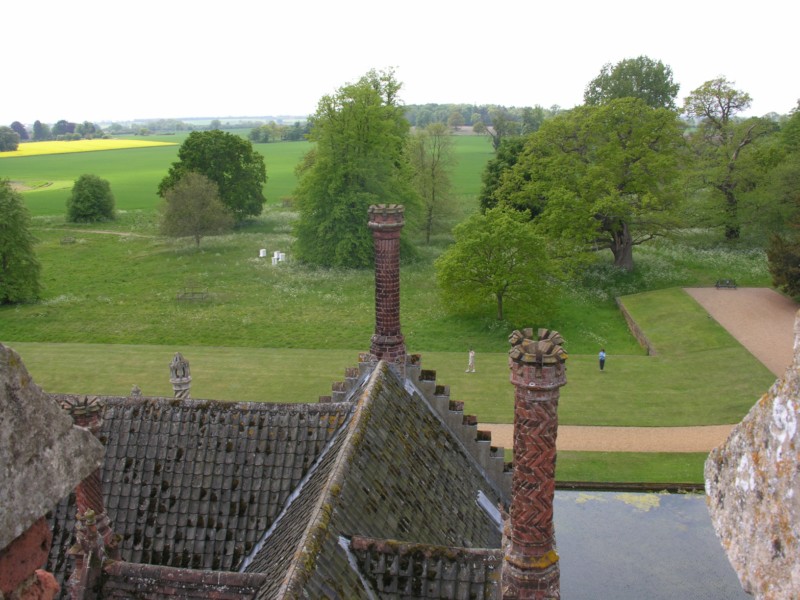 |
|
These very tall chimneys are characteristic of houses
of this date. Beyond the lawns you can see
the walk I took amongst the cow parsley. Fields of rape seed were in flower in
the distance.
|
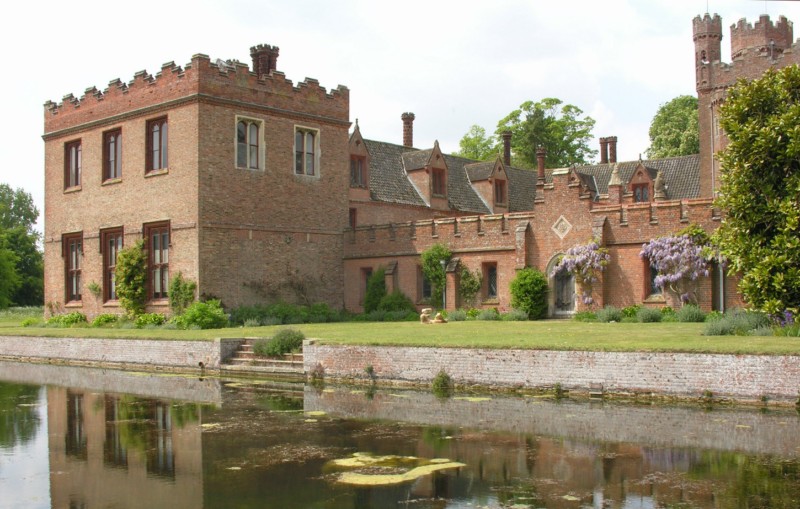 |
|
Tucked away behind the house was a small garden
with steps leading down to the water. The figure on the grass was actually
a sculpture.
For details of Oxburgh Hall click on the link
below- http://www.nationaltrust.org.uk/main/w-oxburghhall |
|
